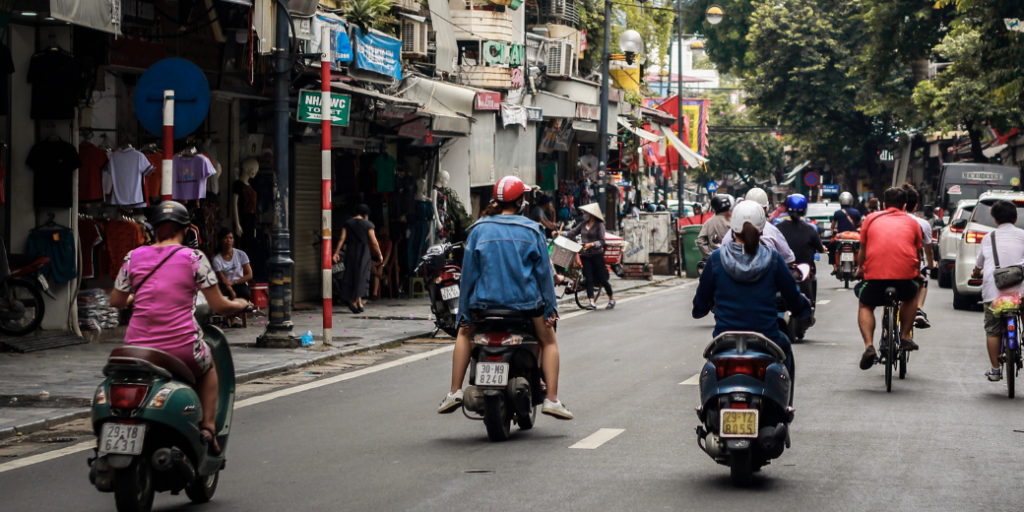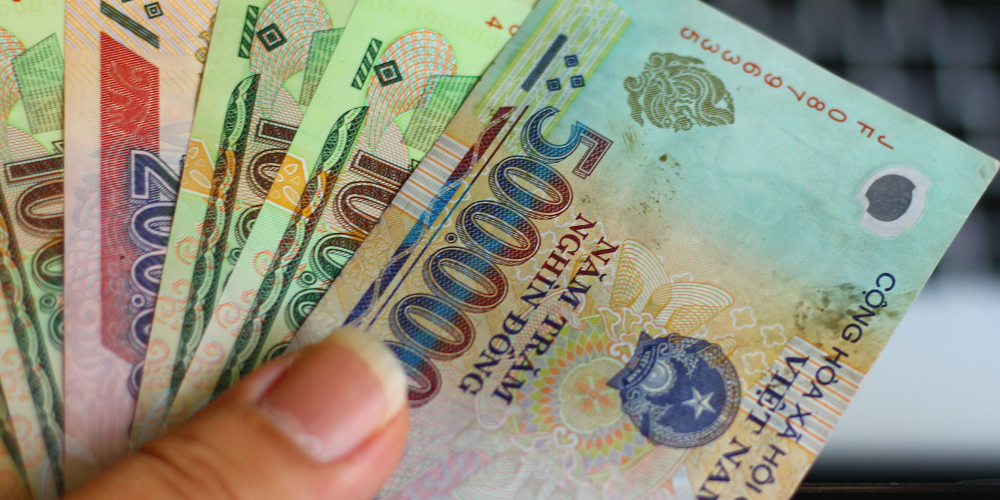Industry Reports
Small to Mid-Size Clinics in ASEAN

ASEAN’s Clinic Landscape
| Clinics Are Foundational for Medical Access in ASEAN
Small to mid-size clinics are fundamental to ASEAN’s healthcare system. They are vital for outpatient care, chronic disease management, and reducing hospital congestion. These clinics primarily offer primary healthcare, diagnostics, and minor treatments. Some specialised clinics also provide short-term inpatient care, such as for maternity or minor surgeries. Their capacity to handle routine outpatient care and minor procedures significantly improves healthcare accessibility across the region. This positions them as key players in a collaborative healthcare ecosystem.
The clinics sector across key ASEAN markets presents a diverse landscape concerning public and private facilities, healthcare expenditure, and outpatient care revenue. Countries like Thailand, Malaysia, Indonesia, and Vietnam show a significant presence of both public health centres and private clinics, catering to varying healthcare needs. For instance, Vietnam notably has a much larger number of private clinics compared to public facilities. Singapore, while having a smaller number of polyclinics, operates a substantial number of private clinics. Notably, Singapore’s government allocates a significant portion of its health spending, reflecting substantial subsidies to private clinics, national insurance, and hospitals, showcasing a distinct public-private model. Generally, government-run clinics are crucial in rural areas for providing subsidised services , while private clinics dominate urban settings, offering affordable, convenient, and often insurance-linked services that appeal to middle-class and corporate patients.
Source: The ASEAN Secretariat | World Bank
Demand-Supply Dynamics
| Demographics & Lifestyle Drive Rising Demand
ASEAN is experiencing a significant demographic shift with an ageing population, directly increasing demand for clinic services. By 2050, over 20% of key ASEAN markets’ populations will be 60 years or older, leading to increased demand for geriatric care, chronic disease management, and preventive healthcare. Concurrently, the region faces rising chronic diseases, including increasing obesity rates, especially among children, and double-digit diabetes prevalence in Malaysia, Vietnam, and Singapore. These trends will drive greater patient visits to GP clinics and specialised chronic disease centres. As hospitals prioritise critical care, small to mid-size clinics will play a growing role in managing age-related and lifestyle diseases, alleviating pressure on larger facilities.
| Growth Fueled by Broader Healthcare Trends
Expanding insurance coverage and ongoing urbanisation significantly influence healthcare access and clinic growth across ASEAN. As urban populations grow, demand for conveniently located outpatient care increases. Expanding insurance coverage directs more insured patients to clinics, despite existing gaps. Governments are strengthening universal healthcare, potentially driving more insured patients to clinics. Clinics must adapt to evolving insurance policies, including reimbursement changes, to remain competitive. For instance, Thailand’s Universal Coverage Scheme enables government-funded reimbursements for GP visits. Malaysia anticipates more insured patients due to new premium-sharing measures.
ASEAN is also a global hotspot for medical tourism, driven by affordability, high-quality care, government initiatives, and relaxed visa policies. Thailand, Malaysia, and Singapore lead this market, attracting millions of foreign patients annually. Thailand is renowned for cosmetic procedures, Malaysia for fertility and cardiology, and Singapore for advanced specialist care. This burgeoning industry significantly benefits private clinics, particularly those specialising in aesthetics, fertility, and cardiology. The aesthetic clinics sector, in particular, is booming due projected growth from USD 3.0 billion in 2024 to USD 6.6 billion by 2032, representing a 10% CAGR.
| Support & Tech Adoption Accelerate Expansion
Governments across ASEAN actively support small to mid-size clinics through subsidies, digital health initiatives, and regulatory reforms, aiming to improve accessibility, efficiency, and private sector participation. Malaysia’s Madani Medical Scheme provided over 1 million free treatments in private clinics in 2023. Thailand allows 100% foreign ownership of medical businesses and offers tax exemptions to attract investment. Indonesia’s SATUSEHAT Mobile App facilitates data exchange and streamlines administrative work. Singapore’s Community Health Assist Scheme (CHAS) has enrolled over 1,300 private clinics, allowing subsidised treatment for lower-income and elderly patients.
Concurrently, ASEAN’s small to mid-size clinics are adopting digital health solutions, driven by a projected 9% expansion in the region’s digital health industry from 2024-2032. Innovations are improving access and efficiency despite challenges like cost and skill gaps. Telemedicine is expanding for virtual consultations; surveys show 60-72% of consumers in key ASEAN markets were open to its use by 2024. Electronic Health Records (EHR) and digital management systems are digitising patient files, enhancing continuity of care. AI-powered diagnostics assist in X-ray and scan analysis, with some clinics piloting AI-driven triage tools.
Source: WHO | Trésor-Economics | Social Portection | General Insurance Council | The Prakarsa | Insurance Asia | Channel News Asia | RHB | MedPark Hospital | BioSpectrum Asia | Channel News Asia | Data Bridge Market Research
Challenges and Emerging Opportunities
| Operational Barriers Hinder Clinic Growth
Challenges faced by key stakeholders — patients, the healthcare workforce, governments, and suppliers — present distinct business opportunities within ASEAN’s clinic sector. For patients, issues include high out-of-pocket spending (e.g., 40% in Vietnam, 32% in Malaysia), making private clinics costly. Doctor shortages, particularly in rural areas (e.g., 0.7 per 1,000 people in Indonesia), lead to unequal access. Limited insurance coverage for chronic disease management and elderly care is also a concern. Solutions involve expanding telehealth and mobile clinics to reach underserved areas , offering affordable insurance via micro-insurance or fintech-driven payment solutions , and implementing preventive and home-based monitoring programmes.
For the healthcare workforce, staff shortages are prevalent, with doctor density in most ASEAN countries (0.7-0.9 per 1,000) below global standards. High burnout, retention issues from long hours, low pay in rural areas, and workforce migration strain clinics. Many staff also lack digital training in EMR, AI diagnostics, and telehealth. Solutions include integrating AI and automation for tasks like triage and remote consultations to reduce staff burden.
Government health authorities and insurers face underfunded public healthcare (ASEAN health spending 1-4% of GDP, below 6% global average), leading to overcrowded hospitals and limited private clinic support. Fragmented health systems and slow reimbursement processes disrupt clinic cash flow. Limited digital integration means most clinics lack direct links to public insurance platforms, increasing administrative burden. Solutions include Public-Private Partnerships (PPPs) where governments contract private clinics to alleviate public hospital strain. Unified Health IT and insurance integration can expand national EHR systems and digital reimbursement processes for faster payments.
For pharmaceutical and medical device suppliers, regulatory barriers and supply chain issues result in fragmented drug approvals and medical device imports. High equipment costs and cash flow constraints delay clinic upgrades. Slow adoption of advanced diagnostics is due to cost, training gaps, and limited insurance coverage for AI-driven tools. Solutions include B2B digital marketplaces and smart procurement to streamline supply. Leasing and subscription models for equipment can lower upfront costs. Investment potential lies in AI diagnostics and remote monitoring solutions.
| Investment & Strategic Growth Potential Emerges
Private Equity (PE), Venture Capital (VC) firms, and Japanese corporations are increasingly investing in mid-size clinics across ASEAN, recognising their growth potential. This includes PE/VC investment in clinic chains (e.g., GIC‘s USD 150 million investment in Asia Healthcare Holdings, Quadria Capital‘s USD 102 million in NephroPlus). Specialty Healthcare Investments are prominent (e.g., Bain Capital‘s USD 157 million in Mayapada Healthcare, Jinxin Fertility‘s acquisition of a 30% stake in Morula IVF, SALT Ventures backing Kehamilan Sehat). Tech-Enabled and Digital Health Clinic Investments are also significant (e.g., Golden Gate Ventures and Cercano Management funding FDcare, Altara Ventures investing in Klinik Pintar). Japanese Corporate Investment is notable, with Sumitomo Corporation acquiring CareClinics Healthcare (MYS) and Sojitz Corporation investing in Qualitas Medical Limited (MYS). Investors value clinic chains’ scalability, affordability, high tech integration potential, and niche focus yielding premium valuations.
Several emerging opportunities further shape the future growth of clinics. Insurance-linked investments position clinics as cost-effective health hubs. Insurers are exploring clinic partnerships to improve efficiency and expand direct patient access, with AI-driven claims and integrated insurance-clinic models gaining traction. This includes bundling insurance with clinics (e.g., AIA partnering with Fullerton Health) , tech-enabled clinics for insurers (e.g., IFC and Mitsui & Co backing MiCare) , and expanding digital health integration (e.g., Prudential partnering with Halodoc).
Source: Ipsos | World Bank | L.E.K Consulting | Bain and Company | Instead | The ASEAN Secretariat | Code Blue
Accelerate Your ASEAN Industry Research with Speeda Insights
Supercharge your research workflow with Speeda Insights — the all-in-one platform offering seamless access to over 11 million private company data records, including extensive coverage across ASEAN markets. Instantly explore emerging trends in sectors like small to mid-size clinics and gain clarity with in-house industry reports, macroeconomic data all in one place.
Find out more about Speeda features here

























